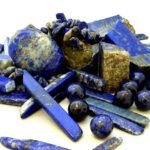Musgravite gemstone is among the rarest gemstones in the world, celebrated for its stunning colors, extreme scarcity, and high value. First discovered in 1967 in the Musgrave Ranges of South Australia, it belongs to the taaffeite family, a rare group of beryllium aluminum oxide minerals. Its scarcity, combined with vibrant gray-green to violet hues, makes Musgravite highly prized among gemstone collectors and luxury jewelers. Large, flawless specimens can command up to $50,000 per carat, highlighting its exceptional value and exclusivity.
What Is Musgravite?
Musgravite gemstone is a rare beryllium aluminum oxide mineral with the chemical formula (BeAl₆O₁₂). It crystallizes in a trigonal crystal system and exhibits a color range from gray-green to violet, occasionally appearing colorless. With a Mohs hardness of 8–8.5, Musgravite is ideal for fine jewelry, offering durability and brilliance. Its transparent clarity and vitreous luster make it stand out among other rare gemstones, cementing its reputation as a collector’s treasure.
Meaning of Musgravite Gemstone
The Musgravite gemstone is often associated with spiritual awareness, intuition, and inner wisdom. It is believed to enhance self-confidence, emotional balance, and decision-making abilities, making it ideal for collectors and spiritual practitioners alike. Many gemstone enthusiasts regard Musgravite as a symbol of transformation, clarity, and personal growth. Its rarity and ethereal beauty amplify its perceived metaphysical powers, connecting the wearer to higher consciousness and divine guidance.
Healing Properties of Musgravite Gemstone
Musgravite gemstone is known for its powerful healing properties. It is believed to reduce stress, release emotional blockages, and foster mental clarity. Many practitioners use Musgravite for meditation, energy healing, and emotional balance, as it helps users connect with their inner self and embrace spiritual growth. Its calming energies make it a valuable tool for wellness and metaphysical practices, combining rarity with holistic benefits.
The Rarity of Musgravite: One of the World’s Most Precious Gems
Musgravite is considered one of the most expensive and elusive gemstones. Only a handful of specimens have been confirmed worldwide, with deposits found in locations such as Madagascar, Greenland, Sri Lanka, and Antarctica. Due to its extreme rarity, musgravite price per carat can reach into the hundreds of thousands, making it one of the most valuable rare gemstones ever discovered.
Origin and Discovery of Musgravite
The Musgravite gemstone was first discovered in 1967 in the Musgrave Ranges of South Australia. Since then, rare occurrences have been found in Sri Lanka, Myanmar, Madagascar, and Greenland, but high-quality facetable stones remain extremely scarce. Its limited availability combined with striking appearance makes Musgravite a must-have for gemstone enthusiasts and collectors worldwide.
Musgravite vs. Other Rare Gemstones
Musgravite is often compared to taaffeite, another incredibly rare gemstone. However, musgravite is significantly scarcer. It shares a similar chemical composition but exhibits unique optical properties, setting it apart from other collectible gemstones like alexandrite, painite, and red beryl. Its hardness and rarity make it a strong competitor to diamonds and sapphires in terms of exclusivity and investment value.
Musgravite Crystal Structure and Composition
Musgravite belongs to the oxide mineral group and has a trigonal crystal system. It consists primarily of beryllium, aluminum, oxygen, and magnesium. The presence of iron and titanium gives the gemstone its distinct iridescent musgravite effects, which contribute to its beauty. With a Mohs hardness of around 8-8.5, musgravite is a durable gemstone suitable for high-end jewelry pieces.
Musgravite Color Variations and Their Significance
Musgravite gemstones exhibit a unique range of colors from gray-green, violet, to rare colorless tones. Each color is highly prized for its rarity and aesthetic appeal. Gray-green Musgravite symbolizes balance and harmony, while violet shades are associated with spiritual growth and intuition. Colorless Musgravite, though extremely rare, is considered a pure collector’s gem. The intensity and saturation of its color directly impact its market value, making vivid and transparent specimens the most sought-after among luxury gemstone buyers.
Musgravite Price Per Carat: Why is It So Expensive?
Musgravite price per carat is among the highest in the gemstone market, often exceeding $35,000 per carat for top-quality stones. Its extreme rarity and demand contribute to its steep price. Unlike diamonds, which are commercially mined in large quantities, musgravite is found in only a few places globally, making its availability incredibly limited.
How to Identify Genuine Musgravite Gemstone
Identifying a real Musgravite gemstone requires knowledge of its physical and optical properties. Genuine stones have a trigonal crystal system, vitreous luster, and transparent clarity. It is crucial to check hardness (8–8.5 Mohs), refractive index (1.739–1.735), and density (3.62–3.68 g/cm³). Fake or synthetic stones often lack the subtle color shifts and brilliance of natural Musgravite. Always buy from trusted dealers or certified gemologists to ensure authenticity and retain investment value.
Musgravite in Jewelry
Because of its rarity and dazzling appearance, collectors and jewelers often choose Musgravite gemstones for custom, high-end jewelry pieces such as rings, necklaces, and earrings. Jewelers highlight its vibrant colors using platinum or white gold settings. Scarce and highly sought-after, Musgravite jewelry often comes in limited editions or bespoke designs, attracting enthusiasts and luxury buyers who value exclusive gemstones.
Metaphysical Significance of Musgravite
Many believe that the Musgravite gemstone emits powerful spiritual energies that enhance intuition, insight, and emotional healing. Practitioners use it during meditation, energy work, and metaphysical practices to strengthen their connection with higher consciousness and promote inner balance. Many consider Musgravite a stone of transformation, helping the wearer experience personal growth, spiritual awakening, and emotional clarity, making it both a rare collectible and a spiritual tool.
Care and Maintenance of Musgravite
To maintain the beauty and value of your Musgravite gemstone, handle it with care. Clean it gently using mild soapy water and a soft cloth. Avoid exposing it to harsh chemicals or extreme heat, and store it in a lined jewelry box or soft pouch. While durable due to its Mohs hardness, proper care ensures that Musgravite retains its brilliance, clarity, and high value over time.
Musgravite as an Investment
Beyond its aesthetic and spiritual value, Musgravite is a highly lucrative investment gemstone. Its extreme rarity, limited supply, and increasing collector demand contribute to rising prices over time. Unlike mass-market gemstones, Musgravite’s value appreciates because few specimens exist. Investors often purchase top-quality stones to include in private collections or sell at high-end auctions, making it not only a beautiful gem but also a smart long-term investment.
Why Musgravite Is a Collector’s Gemstone
Musgravite is not just a gemstone; it is a collector’s treasure due to its extreme rarity and historical significance. Unlike diamonds or sapphires, only a few facetable Musgravite specimens exist worldwide. Its limited availability and high value make it highly coveted by collectors. Owning a piece of Musgravite signifies exclusivity, prestige, and a deep appreciation for rare natural beauty. It is often included in luxury collections and investment portfolios, making it both a beautiful and financially valuable gemstone.
Musgravite vs Other Rare Gemstones
Comparing Musgravite to other rare gemstones like Taaffeite, Red Beryl, and Alexandrite, it stands out for its scarcity and high market value. While Taaffeite shares a similar chemical composition, Musgravite is often harder and rarer, with fewer available specimens. Its color diversity and clarity surpass many rare gems, making it more desirable for collectors and investors. This unique combination of beauty, rarity, and durability cements Musgravite’s status as one of the most exclusive gemstones in the world.
Tips for Buying Musgravite Gemstone
When buying a Musgravite gemstone, consider certification, color, clarity, and carat weight. Always request a gemological certificate from trusted labs like GIA or IGI. Look for even color distribution, high transparency, and minimal inclusions, which affect both beauty and value. Because Musgravite is extremely rare, only reputable dealers or auction houses should be considered. Understanding market prices and rarity levels ensures buyers get authentic gemstones at a fair value.
Famous Musgravite Discoveries and Auction Records
Over the years, several rare Musgravite gemstones have appeared in auctions, fetching tens of thousands of dollars per carat. Notable discoveries include stones from South Australia, Sri Lanka, and Myanmar, often highlighted for their exceptional color and size. These auction records help establish Musgravite as one of the most expensive and rare gemstones in the market, attracting global collectors and investors.
FAQs About Musgravite
Conclusion
In conclusion, the Musgravite gemstone stands as one of the most extraordinary and rare gemstones in the world. Its vibrant gray-green to violet hues, extreme scarcity, and exceptional brilliance make it a coveted gem for collectors, jewelers, and investors alike. Beyond its rarity, Musgravite offers spiritual and emotional benefits, including clarity, personal growth, and balance. Owning a Musgravite is not only a statement of luxury but also a smart investment due to its increasing value over time. Whether for fine jewelry, meditation, or collection purposes, Musgravite remains a treasured and unique gemstone.






